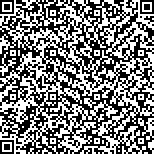| 引用本文: | 仲伟麒,朱玉良,苏怡,白晶,董锐,郑晓华,谢平会,张宇亮.黑龙江省2010~2020年猩红热发病与气象因素的关联性研究[J].生物信息学,2021,19(4):292-296. |
| ZHONG Weiqi,ZHU Yuliang,SU Yi,BAI Jing,DONG Rui,ZHENG Xiaohua,XIE Pinghui,ZHANG Yuliang.Analysis of the association between scarlet fever and meteorological factors in Heilongjiang Province from 2010 to 2020[J].Chinese Journal of Bioinformatics,2021,19(4):292-296. |
|
| |
|
|
| 本文已被:浏览 1244次 下载 591次 |

码上扫一扫! |
|
|
| 黑龙江省2010~2020年猩红热发病与气象因素的关联性研究 |
|
仲伟麒1,朱玉良2,苏怡1,白晶1,董锐1,郑晓华1,谢平会1,张宇亮3
|
|
1.黑龙江省疾病预防控制中心,哈尔滨 150030;2.广东省湛江中心人民医院,广东 湛江 524045; 3.黑龙江省传染病防治院,哈尔滨 150030
|
|
| 摘要: |
| 分析黑龙江省气象因素与猩红热发病的关系,建立时间序列模型,为今后制定更科学有效的猩红热防控策略提供参考依据。收集黑龙江省2010~2020年猩红热月发病数据以及同期气温、气压等气象资料,应用广义相加模型分析气象因素与猩红热发病之间的关联程度和形式。结果发现: 猩红热全年均有发病而且呈现出较为典型的双峰型特征,在春季的4~5月份和冬季的11~12月份发病数达到高峰;月平均气压、月平均相对湿度、月日照时数和月平均风速的P值均小于0.05,表明具有统计学意义。同时,RR(相对危险度Risk Ratio)值均小于1,即猩红热发病与四个气象因素呈负相关。黑龙江省猩红热发病每年存在两个流行高峰,主要以冬季为主,发病数随着月平均相对湿度、月日照时数、月平均风速与月平均气压的升高而降低。 |
| 关键词: 猩红热 气象因素 广义相加模型 关联性 |
| DOI:10.12113/202107001 |
| 分类号:R515.1 |
| 文献标识码:A |
| 基金项目:黑龙江省卫生健康委科研课题项目( No.2019-179). |
|
| Analysis of the association between scarlet fever and meteorological factors in Heilongjiang Province from 2010 to 2020 |
|
ZHONG Weiqi1, ZHU Yuliang2, SU Yi1, BAI Jing1, DONG Rui1, ZHENG Xiaohua1,XIE Pinghui1,ZHANG Yuliang3
|
|
(1. Heilongjiang Provincial Center for Disease Control and Prevention, Harbin 150030,China;2.Central Peoples Hospital of Zhanjiang, Zhanjiang 524045,Guangdong,China; 3. Infectious Disease Hospital of Heilongjiang Province , Harbin 150030,China)
|
| Abstract: |
| The relationship between meteorological factors and the incidence of scarlet fever in Heilongjiang Province was analyzed, and time series models were established, aiming at providing reference for formulating more scientific and effective scarlet fever prevention and control strategies in the future.The data of scarlet fever from 2010 to 2020 in Heilongjiang Province and the temperature and air pressure in the same period were collected, and the correlation degree and form of meteorological factors and scarlet fever were analyzed using generalized additive model. Results show that scarlet fever occurred annually and showed typical bimodal characteristics during April to May in spring and November to December in winter; Pvalues of average monthly air pressure, average monthly relative humidity, monthly sunshine hours, and average monthly wind speed were less than 0.05, indicating a statistical significance. Meanwhile, the RR(relative risk degree Risk Ratio) values were all less than 1, where the onset of scarlet fever was negatively associated with the four meteorological factors. Scarlet fever incidence in Heilongjiang Province, mainly in winter, decreases with the increase in average monthly relative humidity, monthly sunshine hours, average monthly wind speed, and average monthly air pressure. |
| Key words: Scarlet fever Meteorological Factors Generalized additive model Relationship |
|
|
|
|






